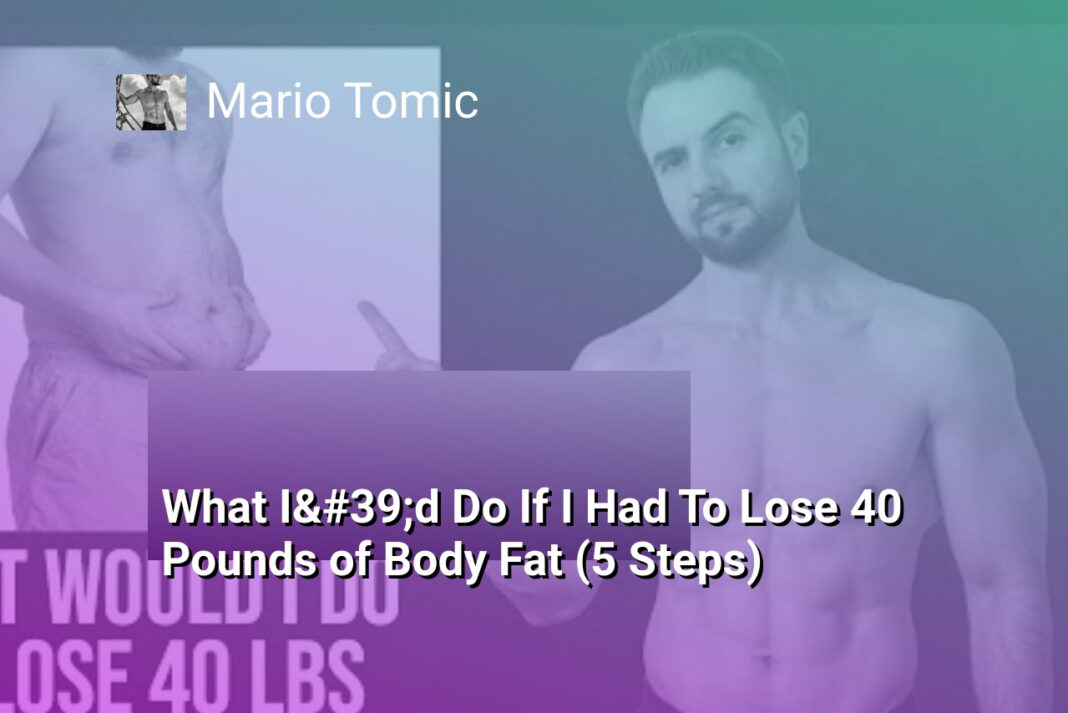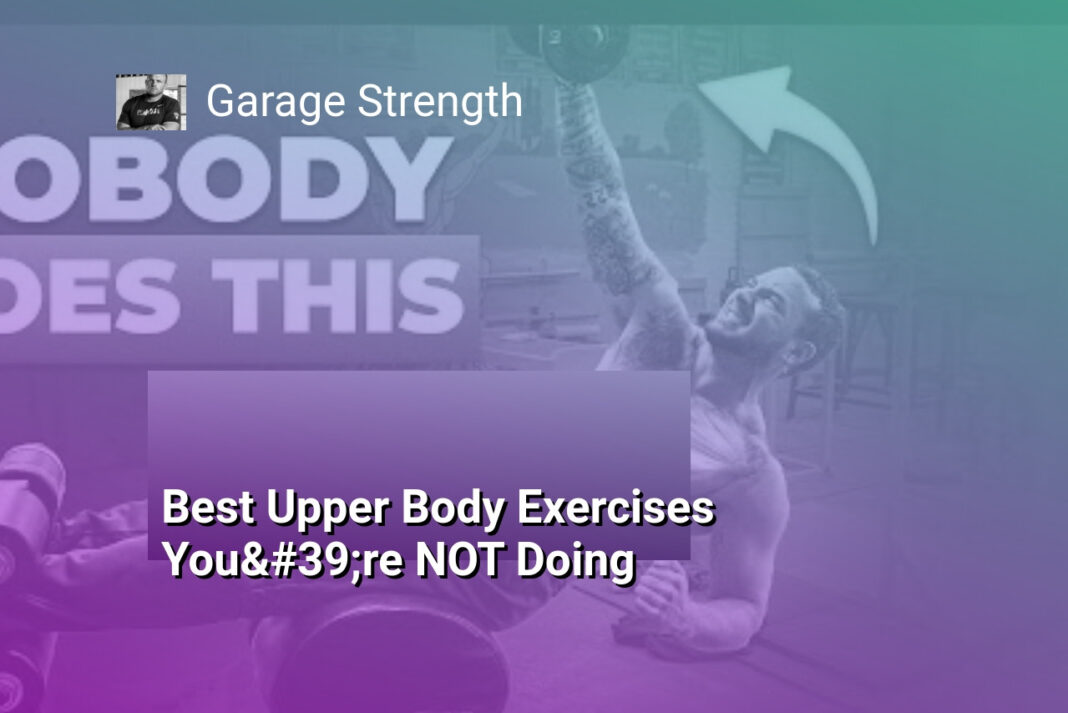The Bottom Line:
Here is a summary of the main points in the text, from a first-person perspective:
- To reach my goal physique of 15% body fat, I need to lose 40 lbs over the next 5-6 months, realizing that the last 10 lbs of stubborn belly fat will be the most challenging to shed.
- I plan to adopt a very strict dietary approach initially, completely cutting out bad habits like junk food, snacking, and convenience meals, to break old patterns and reset my taste buds and reward centers.
- For weight training, I will focus on consistency, good form, and progressive overload, lifting 3-4 times per week for 45-60 minutes, letting my nutrition drive the majority of fat loss.
- To increase my activity levels efficiently, I will commit to taking a few 30-minute walks daily, aiming for 8,000-10,000 steps per day to support my calorie deficit and overall health.
- Consistency is key, so I will strive to keep my healthy habits alive, even if imperfectly, by scaling back on tough days and quickly resetting after slip-ups, gradually building my new identity as a fit, lean person.
Setting Realistic Goals and Expectations for Your Fat Loss Journey
Be Realistic About Your Timeline
Losing 40 pounds of fat is a significant goal that will require time and dedication. It’s important to be realistic about the timeline and not expect overnight results. Depending on your starting point, it may take anywhere from 5 to 6 months of consistent effort to achieve your goal. Weight loss is not always linear, so there will be ups and downs along the way. Focus on weekly weight averages, waist measurements, and visual changes in photos to track your progress.
Prepare for a Challenging Journey
Mentally prepare yourself for the challenges ahead. Losing the first 20 pounds may not show significant changes in your midsection, as the progress will be more noticeable in your face, shoulders, and arms. Expect your clothes to become looser, which is a great sign of progress. However, the last 10 pounds of stubborn belly fat will be the hardest to lose and will take the longest. Stay committed to the process and don’t get discouraged by temporary setbacks or plateaus.
Set Achievable Milestones
Break down your ultimate goal of losing 40 pounds into smaller, achievable milestones. Celebrate each milestone along the way to keep yourself motivated. For example, aim to lose the first 10 pounds, then focus on the next 10, and so on. Setting realistic expectations for each stage of your journey will help you stay on track and maintain a positive mindset. Remember that even small progress is still progress, and every pound lost brings you closer to your goal physique.
Implementing a Strict Diet Plan to Break Bad Habits and Reset Your Taste Buds
Cutting Out Processed Foods and Sugary Drinks
To break bad eating habits and reset your taste buds, it’s crucial to eliminate processed foods and sugary drinks from your diet. These foods are often high in calories, unhealthy fats, and added sugars, which can contribute to weight gain and make it harder to lose fat. Instead, focus on consuming whole, nutrient-dense foods like fruits, vegetables, lean proteins, and complex carbohydrates. By cutting out processed foods and sugary drinks, you’ll be able to better control your calorie intake and provide your body with the essential nutrients it needs to function optimally.
Meal Prepping and Planning Ahead
One of the keys to success when implementing a strict diet plan is meal prepping and planning ahead. By taking the time to prepare your meals in advance, you’ll be less likely to make poor food choices or give in to cravings. Set aside a few hours each week to plan out your meals and snacks, and then spend some time cooking and portioning out your food. This will not only save you time and money in the long run, but it will also help you stay on track with your diet and ensure that you’re consuming the right amount of calories and nutrients each day.
Staying Hydrated and Avoiding Temptations
In addition to meal prepping and planning ahead, it’s important to stay hydrated and avoid temptations when implementing a strict diet plan. Drinking plenty of water throughout the day can help keep you feeling full and satisfied, which can reduce cravings and prevent overeating. It’s also important to avoid situations where you may be tempted to indulge in unhealthy foods or drinks. This may mean avoiding certain social situations or events, or finding healthier alternatives to your favorite treats. By staying focused on your goals and surrounding yourself with supportive people and environments, you’ll be better equipped to stick to your diet plan and break those bad habits for good.
Incorporating Resistance Training and Walking for Efficient Fat Loss
The Power of Resistance Training for Fat Loss
Resistance training is a crucial component of any fat loss plan. By lifting weights and challenging your muscles, you stimulate muscle growth and increase your metabolism. This means that even when you’re not actively exercising, your body is burning more calories throughout the day. Aim to lift weights three to four times per week, focusing on good form, progressive overload, and keeping a training log. Start at a pace you can sustain and gradually increase the intensity over time. Remember, consistency is key – it’s better to do a little bit each day than to burn out quickly.
Walking: The Underrated Fat Loss Tool
Walking is a simple yet highly effective way to increase your activity levels and boost fat loss. Aim to walk for at least 30 minutes, three times a day. You can time your walks with meals to aid digestion and energy levels, or use them as an opportunity to take phone calls or listen to audiobooks and podcasts. Set a goal of 8,000 to 10,000 steps per day. Walking not only helps you burn more calories without having to drastically cut your food intake, but it also improves sleep quality and recovery from your resistance training sessions.
Combining Resistance Training and Walking for Optimal Results
By incorporating both resistance training and walking into your fat loss plan, you create a powerful synergy that accelerates your progress. Resistance training helps you maintain and build muscle, which is crucial for keeping your metabolism high and achieving a toned, defined physique. Walking, on the other hand, provides a low-impact way to increase your daily calorie expenditure without putting excessive stress on your body. Together, these two forms of exercise create an efficient fat-burning combination that will help you reach your goal of losing 40 pounds and achieving your dream physique.
Eliminating Alcohol Consumption for Optimal Results
The Impact of Alcohol on Weight Loss
Alcohol consumption can significantly hinder your weight loss efforts. Alcoholic beverages are often high in calories and low in nutritional value. When you drink alcohol, your body prioritizes metabolizing it over burning fat, which can slow down your weight loss progress. Additionally, alcohol can lower your inhibitions and lead to poor food choices, such as late-night snacking or indulging in high-calorie meals.
Breaking the Habit and Finding Alternatives
Breaking the habit of drinking alcohol can be challenging, especially if it has become a regular part of your social life or stress-coping mechanism. However, there are several strategies you can employ to make the process easier. Start by identifying your triggers and finding alternative activities to replace drinking. This could include exercising, reading, or engaging in a new hobby. Surround yourself with supportive friends and family members who understand your goals and can help you stay accountable.
When socializing, opt for non-alcoholic beverages such as sparkling water, herbal tea, or virgin cocktails. If you do choose to drink, limit yourself to one or two drinks and alternate with water to stay hydrated and reduce your overall alcohol intake.
The Benefits of Eliminating Alcohol
By eliminating alcohol from your diet, you can experience numerous benefits that extend beyond weight loss. Alcohol can disrupt your sleep patterns, leading to poor quality rest and increased fatigue. Without alcohol, you may find that you sleep better, have more energy, and feel more focused throughout the day.
Alcohol can also have a negative impact on your mental health, exacerbating feelings of anxiety and depression. By cutting out alcohol, you may experience improved mood and a greater sense of overall well-being.
From a physical standpoint, eliminating alcohol can help reduce inflammation in the body, improve liver function, and support a healthier immune system. You may also notice improvements in your skin, as alcohol can contribute to dehydration and premature aging.
By committing to eliminating alcohol consumption for at least the first two months of your weight loss journey, you can set yourself up for optimal results and establish healthier habits that will support your long-term success.
Maintaining Consistency and Momentum: The Key to Long-Term Success
Embrace the Journey: Patience and Persistence
Losing 40 pounds of fat is a significant goal that requires a long-term commitment. It’s crucial to understand that this journey will take time, likely spanning several months. Prepare yourself mentally for the challenges ahead and embrace the process. Weight loss is rarely linear, so expect ups and downs along the way. Focus on making consistent progress rather than seeking perfection.
Celebrate small victories and milestones, such as losing the first 10 pounds or noticing your clothes fitting more loosely. These achievements will help maintain your motivation and keep you on track. Remember that the last 10 pounds of stubborn fat may take longer to lose, so be patient and persistent.
Establish Sustainable Habits: Small Changes, Big Impact
While it’s tempting to make drastic changes to your diet and exercise routine, it’s more effective to focus on establishing sustainable habits. Start by making small, manageable changes that you can maintain long-term. Replace unhealthy snacks with nutrient-dense options, gradually increase your daily step count, and prioritize consistent strength training sessions.
As you progress, continue to refine your habits and make additional improvements. This gradual approach allows your body and mind to adapt, reducing the risk of burnout or falling back into old patterns. Consistency is key, so prioritize habits that you can realistically maintain even on challenging days.
Embrace Flexibility and Adaptability
Life is unpredictable, and there will be times when your plans are disrupted. Instead of letting setbacks derail your progress, learn to be flexible and adaptable. If you miss a workout or indulge in an unplanned treat, don’t let guilt consume you. Acknowledge the situation, make the best choices you can in the moment, and get back on track as soon as possible.
Maintaining consistency doesn’t mean being perfect; it means showing up and doing your best, even on difficult days. Give yourself permission to be imperfect and focus on the bigger picture. Every small effort contributes to your overall success, so keep the momentum going by staying committed to your goals, even when faced with challenges.





